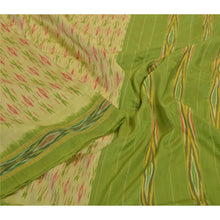TIE-DYE TECHNIQUE
Tie and Dye:-
Tie and Dye is a term used to describe a number of resist dyeing techniques and the resulting dyed products of these processes. The process of tie-dye typically consists of folding, twisting, pleating, or crumpling fabric or a garment, before binding with string or rubber bands, followed by the application of dye or dyes.

Types of tie and dye:-
Types of tie and dye are a resist dyeing method in which the areas you do not want dyed are blocked using different methods of tying and then the fabric is dyed; the areas that are tied remain undyed resulting in beautiful patterns. It is a very simple and inexpensive way to decorate plain clothes with beautiful and intricate looking patterns, with very little effort.
Bandhani / Bandhej-
This is the Indian technique of tie and dye in which small areas of fabric are tied into a point creating a small diamond shaped pattern. The Indonesia variety of this technique is known as Plangi. Small dots are made on the fabric by tying fabric with thread into a point at regular intervals. This diamond shaped pattern can be made in a random pattern or in a way resulting in them forming a motif. In India, this craft is practiced in the states Rajasthan and Gujarat.

Tritik
This technique involves making stitches on the fabric. The fabric is gathered by stitching randomly or by stitching in specific patterns. Running stitches are used to stitch on the fabric. When you take out the fabric after dyeing you will find beautiful patterns in the shape of the stitched thread.
Shibori
This is a tie and dye technique which originated in Japan. In this technique, fabric is wrapped over a variety of objects like wood, plastic tubes, rope and then cord/string/thread is used to tie the fabric to these objects. When you dye this fabric you get beautiful overall patterns, because the area of the fabric under the binding cord and against the core object would not be dyed. As a result, beautiful patterns are formed on the fabric surface .

Mudmee tie-dye
This is a tie and dye technique that is originally from Thailand. In this method, subdued and dark colours are used. Black is also used along with other dark colours. Random patterns are made on the fabric but they are beautiful in their own way.


Ikat
Ikat fabric is a dyeing technique used to create a distinct style of textile pattern. Ikat is done by resisting dyeing sections of the yarns prior to weaving the fabric.
The various types of tie and dye are many. This gives tie and dye its distinctive versatile character, enabling tie and dye to create various kinds of patterns and motifs. Tye and dye evidently has a long history and tradition, and its variations are found in different parts of the world. Over the years it has witnessed itself as a fashion trend, resurfacing itself over with time. Our textile design course teaches students the various types of tie and dye and enables them to explore its potential in fashion and textile design.

Tie-dye fabrics offer a diverse range of uses that vary depending on the design and colors used. They are particularly suitable for producing various clothing items such as T-shirts, dresses, skirts, and accessories like scarves. Additionally, tie-dye fabrics can be used for home decor items like throw pillows and cushions, as well as for beachwear. Their versatility also makes them ideal for art and craft projects, as well as DIY projects.
Interesting Facts:-
- The majority of natural dyes are derived from plant sources: roots, berries, bark, leaves, and wood, fungi, and lichens. Textile dyeing dates back to the Neolithic period.
- Throughout history, people have dyed their textiles using common, locally available materials.
- The durability of the textiles remained uncompromised while enhancing their aesthetic appeal.
- This technique is suitable for everyday use, and it also improves the visual quality of textiles, making them more competitive in the market.
- Tie dye is not limited to just t-shirts. It can be done on a wide range of fabrics, including cotton, silk, rayon, and even denim. Each fabric type absorbs the dye differently, resulting in unique patterns.
- Tie dye is more than just a colorful fashion trend; it has a rich history and cultural significance. Whether you’re a tie dye enthusiast or just curious about this unique art form, exploring fun facts about tie dye can deepen your appreciation for its beauty and craftsmanship.
- From ancient origins to modern techniques, tie dye continues to capture our imagination and inspire creativity.
